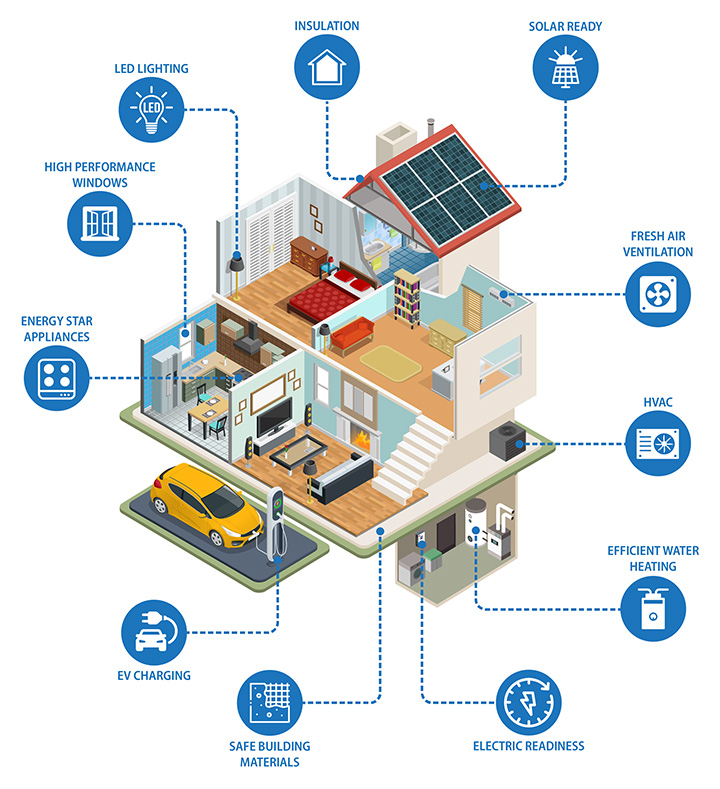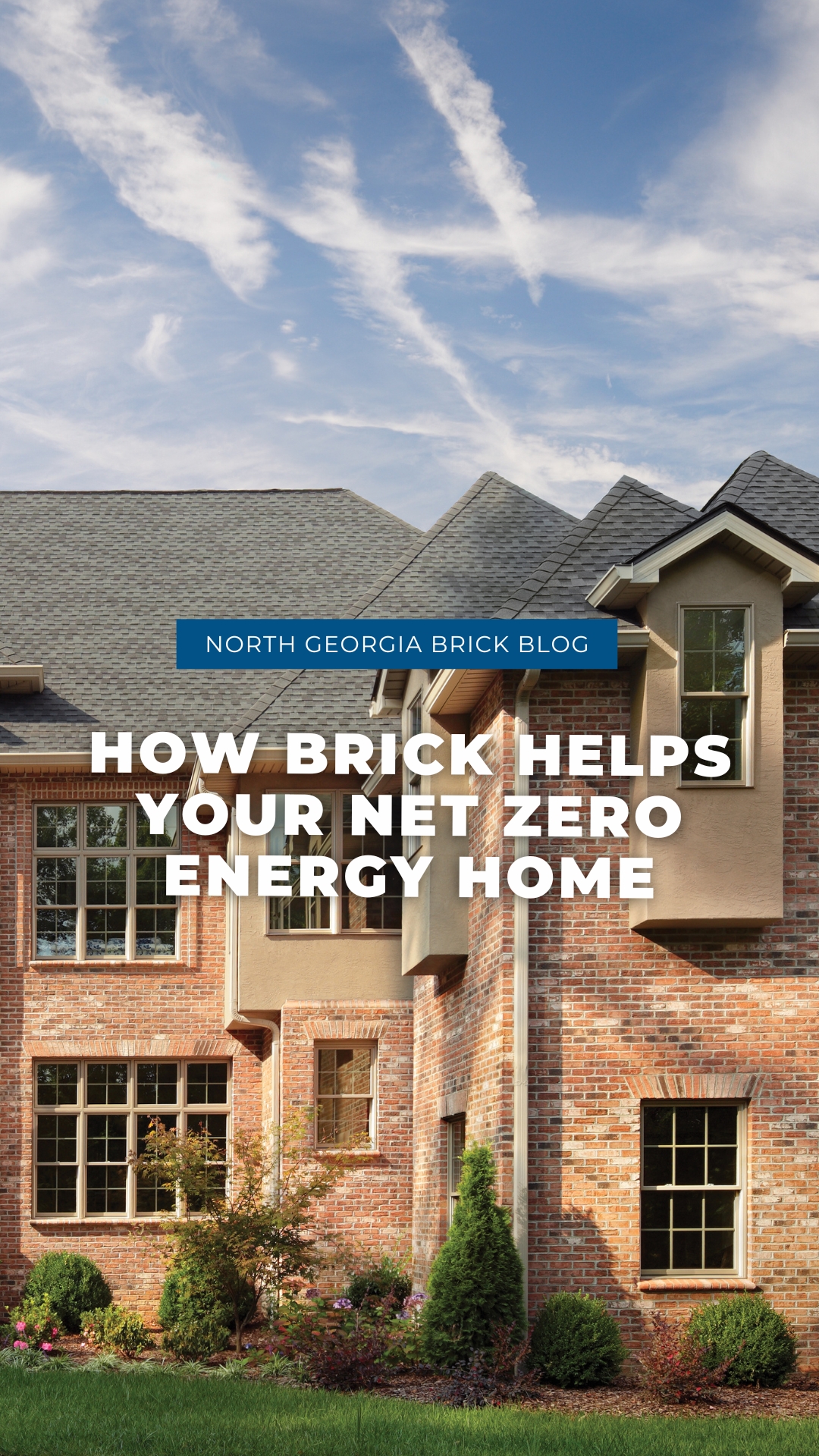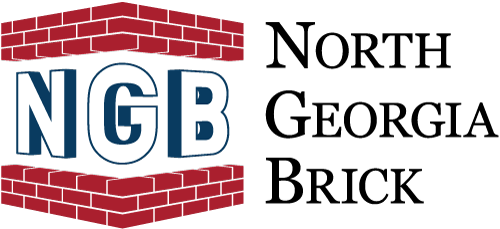Imagine if your home used energy so efficiently that you didn’t need to rely on a public power grid. Devastation from recent storms like Hurricane Helene left thousands in the South without electricity, making the future need for net-zero energy homes more apparent. But how do you create a net-zero energy home? We’ll explain how using brick for a net-zero energy home can boost energy independence and sustainability, creating a safer, healthier, more valuable living space.
What is a Net-Zero Energy Home?
A net-zero energy home creates as much energy as it uses. To achieve this, builders focus on minimizing energy waste through insulation, high-efficiency appliances, and renewable energy sources like solar panels.
A tight thermal envelope is a critical component, reducing the home’s need for heating and cooling. Brick is an ideal product for a net-zero energy home because its thermal mass helps regulate indoor temperatures by absorbing heat during the day and releasing it at night.

The Benefits of a Net-Zero Energy Home
- Higher Resale Value: These homes sell faster and at higher prices due to their sustainability and energy-efficient features.
- Energy Independence: Net-zero homes generate energy, protecting homeowners from power outages, price surges, and disruptions.
- Environmental Benefits: By producing as much energy as they consume, net-zero homes lower greenhouse gas emissions and contribute to a carbon-neutral footprint.
- Increased Savings: With solar panels and energy-efficient systems, homeowners save on utility bills and benefit from lower maintenance costs over time. They can also get a tax credit if their home meets government standards.
- Better for Health and Comfort: Superior insulation and advanced HVAC systems maintain consistent temperatures and improve indoor air quality.

Certifications for Net-Zero Energy Homes
- LEED (Leadership in Energy and Environmental Design): This certification is recognized globally and focuses on sustainable building practices. The LEED Zero verification identifies the achievement of net zero goals in existing buildings.
- Zero Energy Ready Home (ZERH): This U.S. Department of Energy program certifies highly efficient homes ready to be paired with renewable energy systems. Certified homes can receive the Federal 45L Tax Credit, up to $5,000 per home.
- Passive House Certification: This certification emphasizes energy efficiency through super-insulation and airtight construction.
How Does Brick Help the Energy Efficiency of Net-Zero Homes?
Brick is a durable, aesthetically pleasing building material and a natural insulator. It reduces the reliance on heating and cooling systems, lowering energy consumption. Here’s how brick can improve energy efficiency:
- Thermal Mass: Brick’s high thermal mass allows it to absorb and store heat, keeping your home warmer in winter and cooler in summer. This feature can reduce energy costs by 50 percent compared to less efficient materials like vinyl or stucco.
- Durability and Low Maintenance: Brick homes require minimal maintenance, which reduces long-term upkeep and contributes to sustainability.
Weather Resistance: Brick provides excellent protection from the elements, which can reduce wear and tear on the home and its energy systems.
Can a Home Be Retrofitted to Be Net Zero?
If you’re not building a new home, you can still retrofit your current home to achieve net-zero energy status. The process involves:
- Improving insulation by using exterior materials like brick
- Using renewable energy sources like solar panels
- Upgrading windows
- Adding energy-efficient systems
Brick refacing is an excellent way to reduce your home’s energy use. By replacing less efficient exterior materials, like vinyl siding, you can improve your home’s thermal performance. This brick upgrade can significantly enhance your home’s energy efficiency and sustainability.
Is it Costly to Reface a Home with Brick?
Refacing a home with brick might require a higher initial cost than other materials, but the long-term benefits make it a wise investment. Brick’s longevity means you won’t need to replace it for decades, if ever. Over time, the energy savings from improved insulation can offset the upfront costs. Additionally, a brick façade can increase the resale value of a home, making it more attractive to environmentally-conscious buyers.
Brick is pivotal in creating and retrofitting net-zero energy homes thanks to its natural insulating properties, durability, and environmental benefits. Whether you’re building new or looking to upgrade your current home, brick is a sustainable choice that contributes to a greener future while helping you save on energy costs. With certifications like LEED and ZERH setting the standard for energy-efficient homes, brick can help you meet these goals while providing classic beauty and durability.
Are you ready to say goodbye to your power bills? If you want to incorporate brick into your home’s net-zero energy design, visit one of our locations in Cumming, Cartersville, Doraville, Newnan, or Lovejoy, where our team of experts can explain the benefits of brick and how it can help you achieve your zero energy goals.

